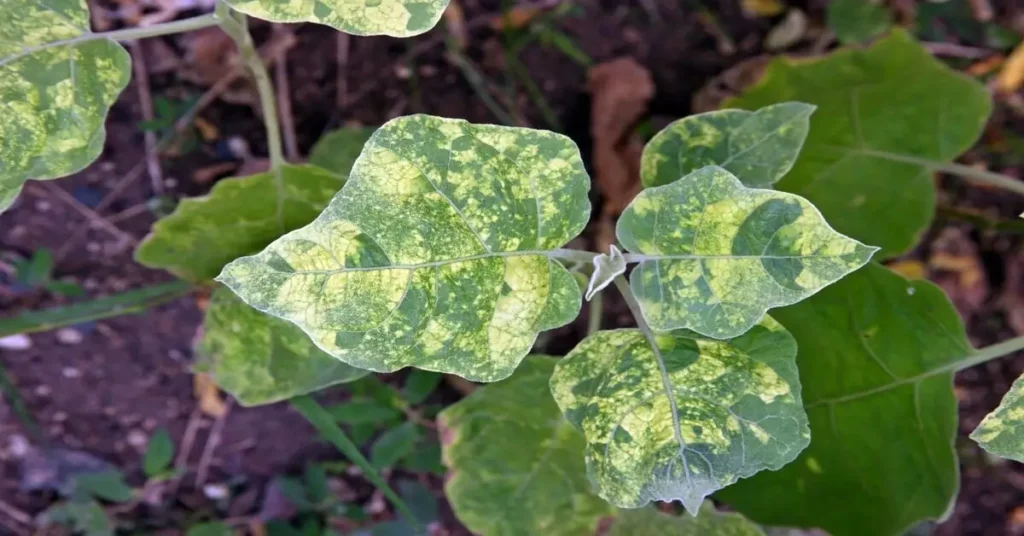Pests and unfavorable weather conditions don’t just threaten the beauty and vitality of plants. Viral diseases present a significant challenge for gardeners, farmers, and researchers. While some ailments are relatively benign, others can devastate entire crops. Today, we’ll delve deep into viral plant diseases, understanding their impact, origins, and management.
Introduction to Viral Diseases in Plants
Viral diseases in plants are caused by minute infectious agents that can replicate only inside their host’s living cells. Unlike bacterial or fungal diseases, these are brought about by viruses. These aren’t cells but nucleic acid particles surrounded by a protein coat. They are adept at hijacking the creation of plant cells, leading to various symptoms in infected plants.
Common Symptoms of Virus Infection
While symptoms can vary based on the virus and the host plant, common manifestations include mottling, yellowing, or ring spots on leaves. The growth of the infected plant may be stunted, and it might show unusual stem growth or deformed fruits.
Key Plant Viruses and Their Impact
Tobacco Mosaic Virus (TMV)
This is one of the most studied plant viruses. Affected plants often display a distinctive mosaic pattern on their leaves, which gave the virus its name. It can influence various plants, but tobacco is especially susceptible.
Tomato Yellow Leaf Curl Virus
It primarily affects tomato plants, those infected display yellowed, curled leaves. It can lead to significant crop loss.
Potato Virus
A significant concern for potato farmers, this virus can lead to reduced yields. In severe cases, the tubers can be affected, making them unsellable.
Citrus Tristeza Virus
This virus affects citrus trees, causing leaf curling, stem pitting, and in severe cases, tree death. It’s a significant concern for citrus growers worldwide.
Plum Pox Virus
Also known as Sharka, it affects stone fruits, primarily plums. Symptoms include yellow rings on fruits and reduced fruit quality.
Cucumber Mosaic Virus
It affects various plants, including cucumbers and tomatoes, leading to mottled leaves and stunted growth.
Cauliflower Mosaic Virus
Cauliflowers affected by this virus show symptoms like yellow rings, mosaic patterns on leaves, and stunted growth.
African Cassava Mosaic Virus
This virus causes a significant reduction in cassava yields. Affected plants display a mosaic pattern on leaves and twisted stems.
Brome Mosaic Virus
They mainly affect grasses, including economically important ones like wheat and barley. Infected plants might show chlorosis or yellow streaks.
Transmission of Plant Viruses
Most viruses are transmitted via vectors, primarily insects such as aphids or whiteflies. They can also spread through infected plant material or even garden tools. As there is no cure once a plant is infected, preventing virus transmission is crucial for disease management.
Disease Management and Prevention
Inspection of New Plants
Ensure you inspect any new plant material for signs of disease. Using virus-free planting materials is the most effective way to prevent the introduction and spread of plant viruses.
Pest Management
Effective pest management can drastically reduce the vectors that spread many of these viruses. Using organic or chemical measures to control pests can significantly diminish the chance of viral spread.
Resistant Plant Varieties
Many plant breeders are working on developing varieties resistant to specific viral diseases. These varieties can block the virus from entering the plant or limit its impact.
Detection of Viral Diseases
Advanced techniques in plant pathology have made rapid and accurate detection of plant viruses possible. From molecular techniques to serological methods, detecting viral RNA or specific proteins can aid in quick identification.
Conclusion
Viral plant diseases pose a significant threat to both agriculture and horticulture. Yet, with proper knowledge and sound management strategies, we can mitigate their impact and ensure the health and productivity of our plants.

